A Townie’s Guide to Summer in Tucson
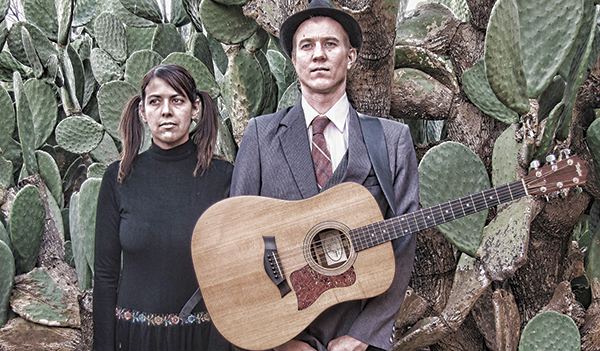
Nowhere Man and a Whiskey Girl
The dog days of summer in sweltering Southern Arizona separate the meek from the mighty like no other natural phenomena. Many quickly depart for cooler climes. The rest of us adopt adaptive techniques like nocturnal workouts and midday siestas. For those who stick around through triple-digit temps, the dramatic population reduction is a boon. No lines to get in anywhere on Fourth Avenue. Quiet neighborhoods with apartments on hold until fall.
Let the snowbirds and students flee to San Diego. Get going? In this town when the going gets tough, the tough stay put. Since we can stand the heat, we don’t have to get out of the kitchen. Here’s what’s cooking in Tucson this season.
At the Tucson Botanical Gardens, summer means the return of their Twilight Third Thursdays series showcasing visual art alongside complimentary live musical performance. On July 18 from 5-8 pm the work of Tucson artists David Kish and Holly Swangtu will be displayed, with the tunes provided by Bisbee indie folk duo Nowhere Man and a Whiskey Girl. August 15 sees local rockers The Cordials and painter/printmaker C.J. Shane featured in the idyllic outdoor oasis at 2150 N. Alvernon Way. Admission is $9 for adults and $5 for children; food, face painting, Isabella’s Ice Cream and a cash bar will all be available. See membership discounts and details at TucsonBotanical.org.
 For the younger set, summer brings free entertainment in the form of Loft Kids Fest (the event formerly known as the Tucson International Children’s Film Festival). Kickoff festivities at Trail Dust Town on Friday, July 19 at 5:30 pm include trick roping by lariat artist Loop Rawlins, followed by a screening of his short The Adventures of Loop & Rhett. Trail Dust Town’s homage to the Old West can be found at 6541 E. Tanque Verde Rd.
For the younger set, summer brings free entertainment in the form of Loft Kids Fest (the event formerly known as the Tucson International Children’s Film Festival). Kickoff festivities at Trail Dust Town on Friday, July 19 at 5:30 pm include trick roping by lariat artist Loop Rawlins, followed by a screening of his short The Adventures of Loop & Rhett. Trail Dust Town’s homage to the Old West can be found at 6541 E. Tanque Verde Rd.
Then each day at 10 am from July 20 to 28, family favorites such as Matilda and Shrek will grace nonprofit The Loft Cinema’s big screen at 3233 E. Speedway Blvd. Arrive early for groovy giveaways, super surprises and pre-show hijinks hosted by Mildred & Dildred Toy Store! LoftCinema.com has the full Loft Kids Fest film schedule. Crave more air-conditioned independent arthouse goodness? Catch the award-winning Peaceable Kingdom: The Journey Home for free at The Loft on Tuesday, July 23 at 7 pm.
For over a decade we heard the calls for revitalization and watched as downtown struggled to get started. Fast forward to today, and Congress Street is humming with activity any night of the week. At the Historic Rialto Theatre, 318 E. Congress St., check out New Jersey third wave ska band Streetlight Manifesto on July 3, finely-aged punkers Rancid on July 23 or LA indie rock outfit Cold War Kids on August 18. Club Congress across the street welcomes 1980s alternative rock icons Camper Van Beethoven on July 23. Eateries such as Hub Restaurant and Ice Creamery, 266 E. Congress St., and Empire Pizza & Pub at 137 E. Congress St. have rightfully become popular enough that reservations may be advisable even during the slow summer months. Both of these establishments’ excellent reputations are well-earned.
From August 14 to 18, the Tucson Audubon Society invites any and all birders to investigate our sky islands and riparian zones for ornithological rarities. The third annual Tucson Bird & Wildlife Festival is an opportunity for nature lovers nationwide to participate in workshops, programs and field trips all celebrating the Sonoran Desert region’s astonishing biodiversity. Festival headquarters will be at the Arizona Riverpark Inn, 350 S. Freeway. Register online at TucsonAudubon.org.
 Indulging oneself for a good cause is always a win-win; thus the 2013 Salsa & Tequila Challenge. A $40/person ticket price benefits the Southern Arizona Arts and Cultural Alliance as well as the Community Food Bank of Southern Arizona. The question is, are you up for it? There’ll be as many as fifty tequila-based mixed drink and menu pairings presented by area chefs with bragging rights at stake, plus creative salsa concoctions galore, so you may want to begin training. The competition takes place at La Encantada shopping center, 2905 E. Skyline Dr., on Saturday, August 24 at 5:30 pm with winning tequilas and salsa announced the same evening. Purchase tickets online at SAACA.org or by telephone at (520) 797-3959 ext. 1.
Indulging oneself for a good cause is always a win-win; thus the 2013 Salsa & Tequila Challenge. A $40/person ticket price benefits the Southern Arizona Arts and Cultural Alliance as well as the Community Food Bank of Southern Arizona. The question is, are you up for it? There’ll be as many as fifty tequila-based mixed drink and menu pairings presented by area chefs with bragging rights at stake, plus creative salsa concoctions galore, so you may want to begin training. The competition takes place at La Encantada shopping center, 2905 E. Skyline Dr., on Saturday, August 24 at 5:30 pm with winning tequilas and salsa announced the same evening. Purchase tickets online at SAACA.org or by telephone at (520) 797-3959 ext. 1.
At Main Gate Square near the University of Arizona, the annual summer exodus leaves behind only the most determinedly heat-resistant portion of the student body. This sturdiest of breeds knows that Irish pub and restaurant The Auld Dubliner, 800 E. University Blvd., continues their happy hour drink specials even during the hottest months. Entertainment at Geronimo Plaza next door comes courtesy of the Friday Night Live! concert series, which on July 5 features the jazzy Butch Diggs & Friends and on July 19 cabaret crooner Heather O’Day. MainGateSquare.com lists current merchant specials.
Longtime residents are familiar with Mt. Lemmon’s charms; day trips to the Catalinas have cooled many a hyperthermic Tucsonan over years past. During recent summers a pleasant scene emerged, with smiling and dancing folk flocking to a big white tent each weekend to simultaneously appreciate local bands and the Coronado National Forest. Music on the Mountain, as it was called, brought thousands of visitors following 2003’s destructive Aspen Fire. Following a year off, the tradition now continues with Top Dead Center on July 27 and Stefan George on August 17 among others. Bring a chair and enjoy the fresh air free of charge! Find the fun each Saturday afternoon from 12:30-4:30 pm at 12901 N. Sabino Canyon Parkway up in Summerhaven (so named for good reason).
 De Anza Drive-In may be history, but Tucson’s love affair with watching movies outdoors continues. Cinema La Placita’s longest-running classic-movies-under-the-stars series screens an older Hollywood gem for $3 admission each Thursday evening at 7:30 pm through August. That price includes popcorn, and the courtyard setting at 110 S. Church Ave. is ideal for canoodling. Cinema La Placita will also show a film at 7:30 pm on Saturday, July 13 as part of the month’s Second Saturdays Downtown celebration. Visit CinemaLaPlacita.com for more information.
De Anza Drive-In may be history, but Tucson’s love affair with watching movies outdoors continues. Cinema La Placita’s longest-running classic-movies-under-the-stars series screens an older Hollywood gem for $3 admission each Thursday evening at 7:30 pm through August. That price includes popcorn, and the courtyard setting at 110 S. Church Ave. is ideal for canoodling. Cinema La Placita will also show a film at 7:30 pm on Saturday, July 13 as part of the month’s Second Saturdays Downtown celebration. Visit CinemaLaPlacita.com for more information.
That’s not all that’s afoot in Tucson this summer. Science Sundays at the Children’s Museum Tucson, 200 S. 6th Ave., are a chance for the little ones to explore hands-on educational exhibits at a discount. Admission is only $2 every Sunday through August; plan your visit at ChildrensMuseumTucson.org. For a flashback, try Flandrau Planetarium’s “Dark Side of the Moon” laser light show on Friday and Saturday nights at 8 pm. The on-campus facility at 1601 E. University Blvd. also offers educational programs like “Exploring Saturn’s Mysteries” and “Tucson Sky Tonight.” Flandrau.org has details.
Above ground kiddie pool: $11.99. Ten-pound bag of ice: $1.79. Summer in Tucson: priceless.

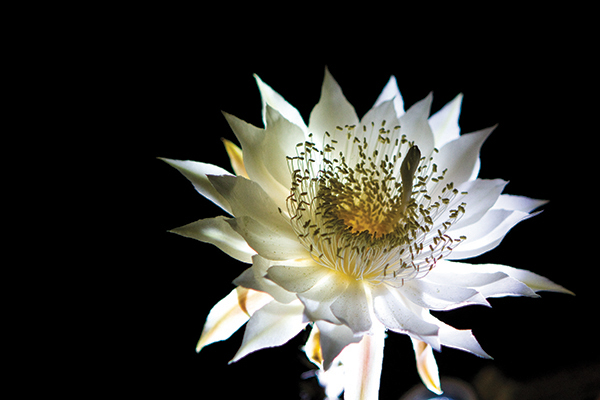
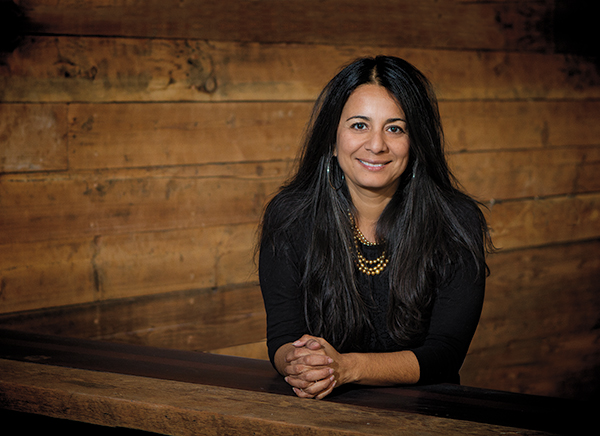

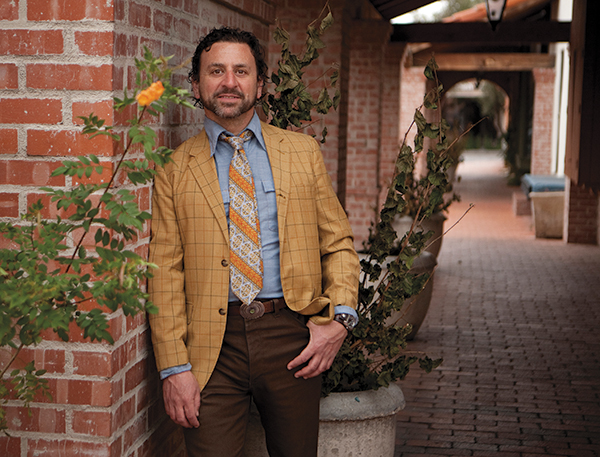 Ari Shapiro is a busy man. Despite his successes with Sparkroot and Xoom, Shapiro dreamt of owning a “cozy, hole-in-a-beaut-wall authentic pizza joint.” When a space opened up in the Broadway Village, a historic Josias Joesler shopping center with tile floors and arched windows, Shapiro saw the perfect space. “I had to move my vision up a few years,” he joked. And now, Falora is set to open March 2nd.
Ari Shapiro is a busy man. Despite his successes with Sparkroot and Xoom, Shapiro dreamt of owning a “cozy, hole-in-a-beaut-wall authentic pizza joint.” When a space opened up in the Broadway Village, a historic Josias Joesler shopping center with tile floors and arched windows, Shapiro saw the perfect space. “I had to move my vision up a few years,” he joked. And now, Falora is set to open March 2nd.
 Steve Tracy is a straightforward, practical kind of guy. The day I meet him he’s wearing no-nonsense work clothes and is fully involved in the hubbub of work at Thunder Canyon Brewery’s new Downtown location (220 E. Broadway at Fifth Avenue.) He apologizes for keeping me waiting, but I’m impressed, not perturbed—Steve started Thunder Canyon Brewery over a decade ago, and it’s cool to see that he’s still fully involved on the ground in day-to-day operations. With plenty of work still to be completed before the brewpub opens on January 8th (ed: NOW OPEN!), Steve is good-natured about the fact that I’m interrupting his day to pepper him with questions.
Steve Tracy is a straightforward, practical kind of guy. The day I meet him he’s wearing no-nonsense work clothes and is fully involved in the hubbub of work at Thunder Canyon Brewery’s new Downtown location (220 E. Broadway at Fifth Avenue.) He apologizes for keeping me waiting, but I’m impressed, not perturbed—Steve started Thunder Canyon Brewery over a decade ago, and it’s cool to see that he’s still fully involved on the ground in day-to-day operations. With plenty of work still to be completed before the brewpub opens on January 8th (ed: NOW OPEN!), Steve is good-natured about the fact that I’m interrupting his day to pepper him with questions.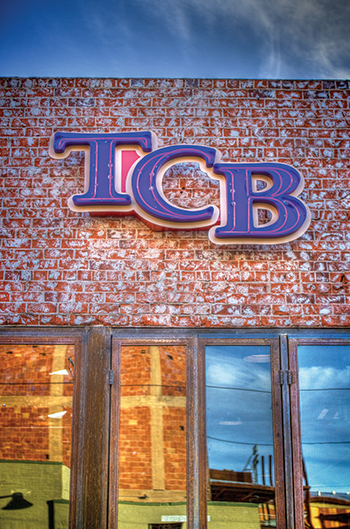 This doesn’t mean that TCB isn’t constantly innovating. “We’re always working on two or three new beers,” and “We always keep in mind what people are asking for,” says Steve. His current favorite TCB offering is the Cuppa Joe coffee porter, which is made with locally-roasted Cartel coffee, he says without hesitation. In general Steve prefers darker beers like stouts and porters—“I’m not so much a hoppy beer drinker,” he explains, though he adds that he appreciates all beers. Any guilty pleasures—a light beer or mainstream national beer? Steve looks slightly disgusted, and the answer is an adamant no. Well then, what are his favorite microbrews? He smiles and admits that he mostly drinks his own stuff. I get it—in addition to being delicious, drinking his own beer has to be the most economical option for Steve!
This doesn’t mean that TCB isn’t constantly innovating. “We’re always working on two or three new beers,” and “We always keep in mind what people are asking for,” says Steve. His current favorite TCB offering is the Cuppa Joe coffee porter, which is made with locally-roasted Cartel coffee, he says without hesitation. In general Steve prefers darker beers like stouts and porters—“I’m not so much a hoppy beer drinker,” he explains, though he adds that he appreciates all beers. Any guilty pleasures—a light beer or mainstream national beer? Steve looks slightly disgusted, and the answer is an adamant no. Well then, what are his favorite microbrews? He smiles and admits that he mostly drinks his own stuff. I get it—in addition to being delicious, drinking his own beer has to be the most economical option for Steve! The Toole Avenue Arts Bazaar is an outdoor arts offering for the entire community, featuring more than 50 local and Warehouse District artists. This is the first time in Solar Culture’s 25 year history that it is taking the art to the streets. Find that perfect art treasure at an affordable price. And meet your favorite local artists.
The Toole Avenue Arts Bazaar is an outdoor arts offering for the entire community, featuring more than 50 local and Warehouse District artists. This is the first time in Solar Culture’s 25 year history that it is taking the art to the streets. Find that perfect art treasure at an affordable price. And meet your favorite local artists. Post-Open Studio Tour Exhibit
Post-Open Studio Tour Exhibit FREE FAMILY FESTIVAL IN THE PARK SATURDAY, NOVEMBER 17TH
FREE FAMILY FESTIVAL IN THE PARK SATURDAY, NOVEMBER 17TH A celebration of the richness, beauty and fine craft of the silver photograph by three masters of the art: Harry Callahan, Ralph Gibson, and John Loengard.
A celebration of the richness, beauty and fine craft of the silver photograph by three masters of the art: Harry Callahan, Ralph Gibson, and John Loengard.



Also find us on...